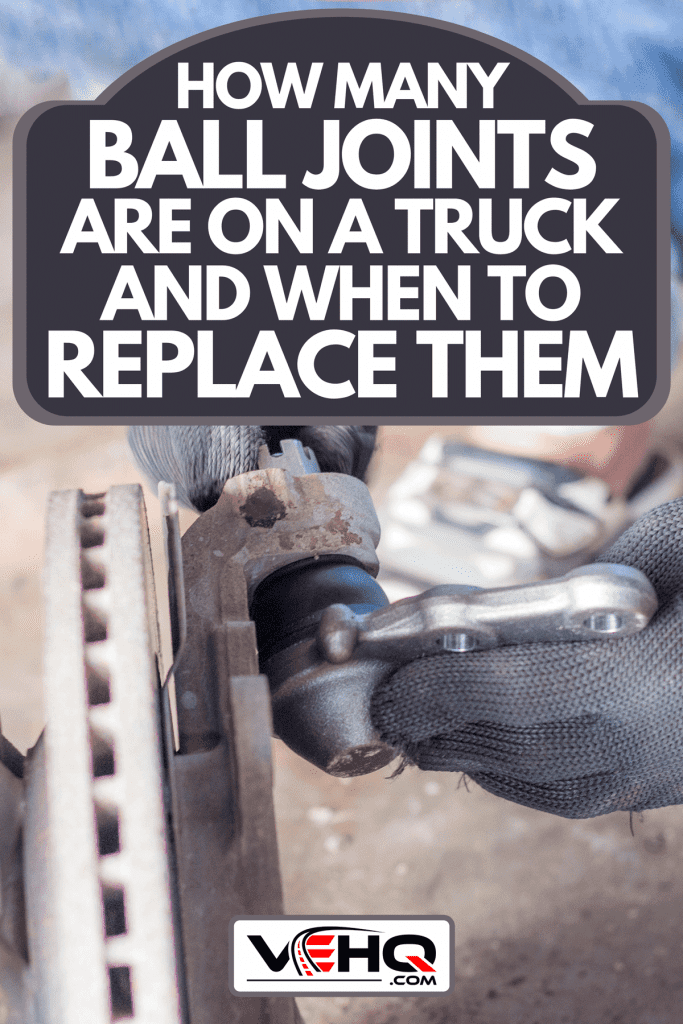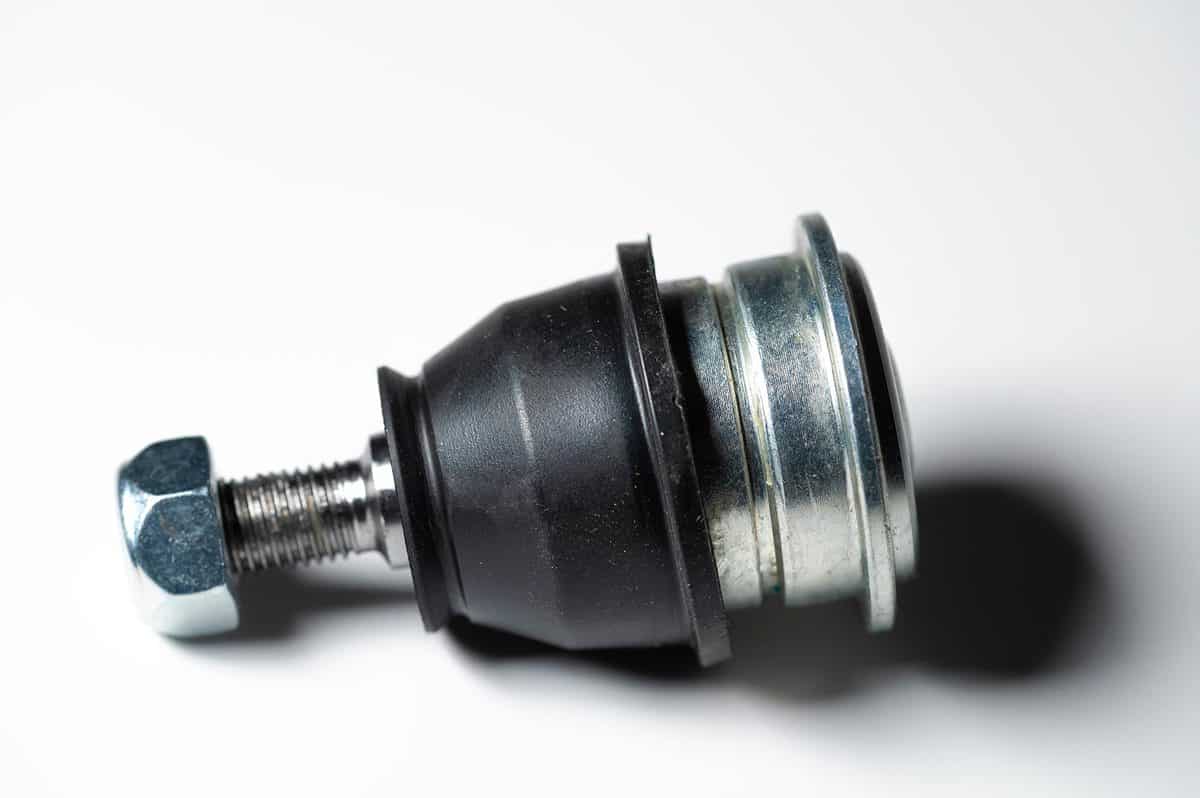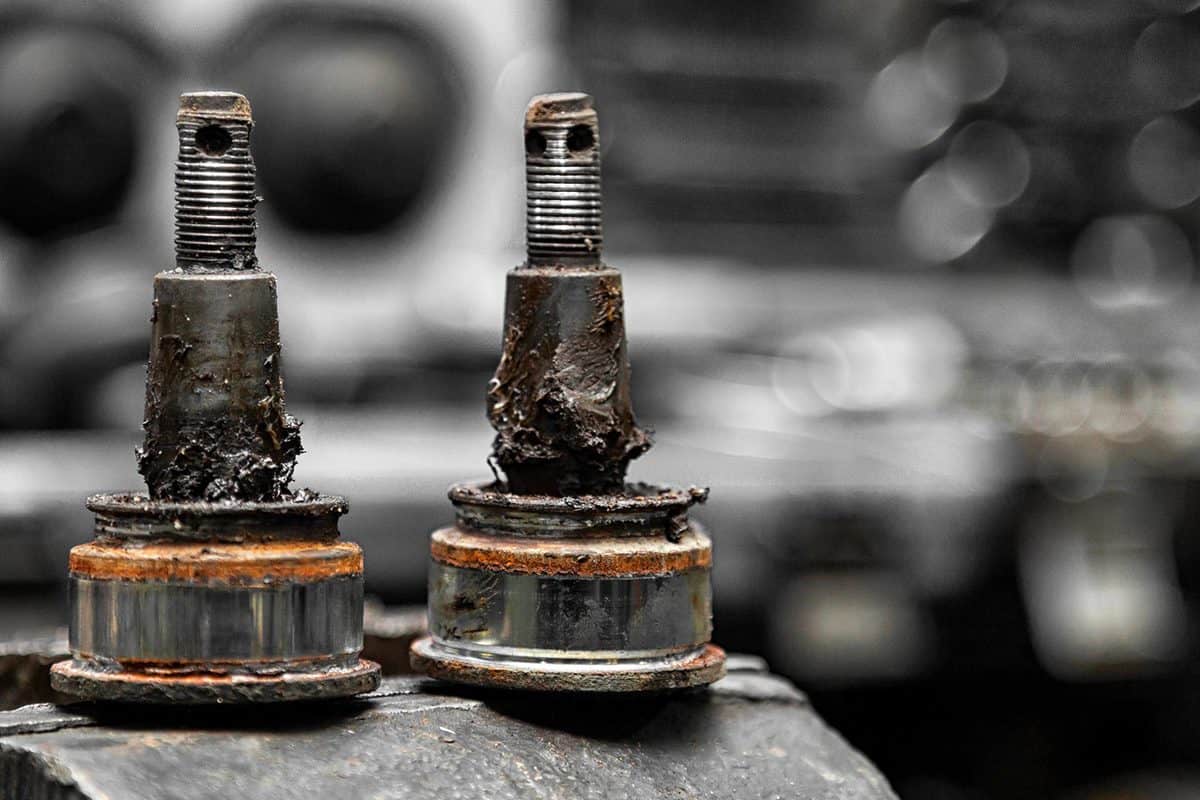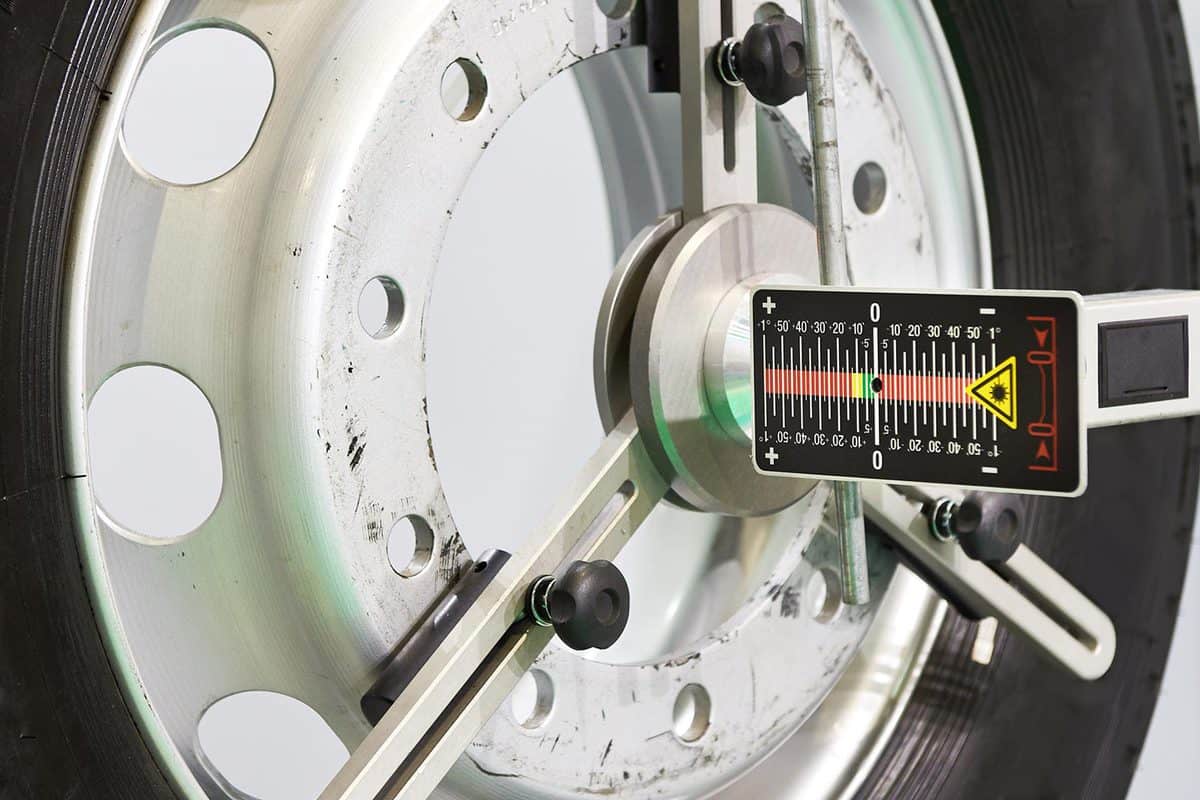Ball joints connect your wheel hub to the control arms. They are very critical to the safe operation of your truck since they influence its stability. You may be wondering how many ball joints are on a truck and when you should replace them. We talked to the experts, and this is what we found out.
Most trucks have four ball joints; two load-carrying and two follower ball joints. The load-carrying ball joints are considerably larger and experience a higher wear and tear rate due to the weight of the front car that rests on them. Since ball joints do not always indicate deterioration, they should be thoroughly inspected during routine truck maintenance and immediately replaced if worn.
Keep reading as we will discuss how long ball joints should last on a truck, how to identify when they need replacing, and whether to replace all ball joints. We will also discuss how much it costs to replace all four ball joints and if you need an alignment after replacing them.

How do I know if ball joints need replacing?
A ball joint connects the control arm to the steering knuckle. It functions as a flexible joint and is susceptible to high wear and tear due to constant movement. Most trucks have four ball joints, with the lower ones being load-carrying while the upper ones act as a second pivot point for the steering knuckle.

Some trucks have ball joints with grease fittings and need to be greased occasionally, while others have non-serviceable ball joints that are greased at the factory and sealed with a dust boot. The dust boot prevents dust and other impurities from ruining the ball joint.
Although ball joints do not need to be replaced, occasionally, they will eventually fail in the course of a truck's lifetime due to the friction and movement they undergo. Moreover, load-carrying ball joints fail faster than their follower counterparts since most of the weight of the front car rests on them.
You need to replace the ball joint if:
- It is loose. Since it is designed to fit tightly in its steel casing, a loose ball joint will affect wheel alignment, cause noise in the suspension area, and lead to abnormal tire wear.
- The dust boot is broken or torn. In this case, grease may trickle out, or water and dirt may get inside the ball joint, thus causing it to malfunction.
- It is corroded such that it has excessive rust damage. Rust weakens the ball joint, making it more vulnerable to failure, leading to the wheel falling off and the vehicle eventually losing control.
- It lacks grease. Greasing reduces friction between the stud and the metal housing of the ball joint. Greasing also keeps impurities away from the ball joint, enabling it to function efficiently.

Symptoms of Bad ball joints
A ball joint is very critical in ensuring a safe and smooth ride. When it is damaged, you will notice the following:
- A clonking noise seems to be coming from a corner in your car. The noise is more distinct as you go around a corner, over a bump or a dip. Initially, the sound may be faint and far between, but as the ball joint continues to get worn, the noise becomes louder and more frequent.
- Sloppy or stiff steering. You may notice a vibration on your steering as you drive along a level road. The truck may also veer to the left or right when going over bumps.
- Unevenly worn tires, especially where the inner or outer tire wears out faster than the rest of the tread.
Although some ball joints have built-in wear indicators, most of them are examined by prying against the suspension while watching for excessive movement in the joint.
Sometimes ball joints do not indicate that they are worn. At other times, the symptoms may appear when it is already too late. Additionally, a visual inspection may not be reliable in assessing the condition of the ball joints, as you would need to hoist the vehicle for a thorough examination. Moreover, load-carrying ball joints must be unloaded for inspection.
Regular inspection will ensure that any failing ball joints are caught in good time. You can schedule for the ball joints to be inspected every time you take your truck to the repair shop for routine maintenance, such as a change of air and oil filters.
It is advisable to replace ball joints as soon as they demonstrate wear since stalling may endanger your life and that of other road users. Worn ball joints impede your ability to steer and control the truck. Moreover, replacing the ball joints will save you money by preventing further damage to your truck.
Do you replace all ball joints?
It is advisable to replace ball joints in pairs since if one is worn out, its partner will most likely be worn out as well. Replacing the ball joints in pairs rids the possibility of another ball joint failing a short while later. Furthermore, it saves the truck's time spent in the repair shop and labor costs since the repairs are done once.
For trucks that have four ball joints, you do not have to replace all four ball joints together as they do not wear out evenly. As previously mentioned, the load-carrying ball joints wear out faster than the follower ones since they support most of the anterior weight of your truck.
It is advisable to purchase good quality replacement parts for the repairs. Although they are more pricey, they will serve you longer.
How long should ball joints last on a truck?
Typically, ball joints are expected to last 70,000 to 150,000 miles worth driving. However, the actual lifespan of the ball joints in your truck will depend on your driving habits, the condition of the roads, and exposure to elements.
Potholes, rough rural gravel roads, and road salts can cause premature wearing out of the ball joints. Moreover, ball joints installed on the left side of the truck may last longer than those on the right side since the right-side ball joints experience more rotational wear due to sharper right turns. Nonetheless, lower ball joints will wear out faster than the upper ones due to more exposure to road salt.
How much does it cost to replace all four ball joints?
It will cost an average of $677, with prices ranging from $ 360 to $2,000 to replace all four ball joints. This price is inclusive of the cost of parts and labor charges.
The price for new ball joints will depend on your truck's make, model, and year of manufacture. Parts may range from $125 to $400 or more for a set of four ball joints. If the ball joints are connected to the control arm in one assembly, you must change the whole set. The set may cost about $500 to $600.
Labor costs will depend on how easy it is to access the ball joints, as this will determine the number of hours it takes to work on the truck.
You can compare the prices from different repair shops to ensure that you get the best price. Often, independent auto repair shops are less expensive than dealerships.
Is replacing ball joints hard?
Most mechanics rate replacing ball joints as moderately difficult, especially where the vehicle has a strut-type suspension system. However, most trucks have a coil-spring suspension system. Therefore, it is advisable to engage a professional mechanic to replace the ball joints rather than doing it yourself. The springs have stored energy which can cause severe physical damage if handled incorrectly.
How to find a good mechanic
It is pivotal that you opt for a well-experienced mechanic since they are more likely to have the required technical know-how and the necessary equipment to install new ball joints correctly. Look out for the following to ensure that your vehicle is in good hands.
- Pick a repair shop that specializes in your car's brand. The mechanic is more likely to do a thorough job when he has handled that type of task before.
- Seek recommendations from those who have a similar type of truck as yours.
- Ensure that the repair shop is certified by the National Institute for Automotive Service Excellence.
- Try out the shop by having them perform routine maintenance on your truck first before replacing the ball joints.
Do you need an alignment after replacing ball joints?
An alignment is only essential after replacing ball joints if the previous alignment was done when the ball joints were out of shape. However, you may opt for an alignment after replacing ball joints as it assures you of proper road contact and a smooth ride since the tires are properly centered in the wheel wells.

In conclusion
Ball joints are an invaluable part of your car's front suspension as they influence your control over the car. It is advisable to thoroughly inspect them occasionally for wear and tear and promptly replace the worn ones.
Other frequent truck questions for your reading:
How Much Weight Can A 1/2 Ton Truck Pull?
How To Get A Dent Out Of A Truck – 6 DIY Methods for Truck Body and Bed!
